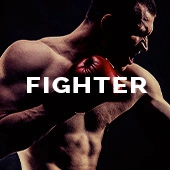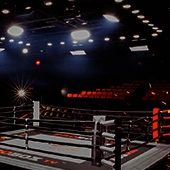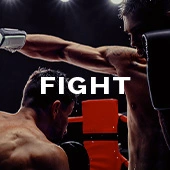by David P. Greisman, live from ringside
NEW YORK CITY — Coming in, the numbers were on Wladimir Klitschko’s side.
In terms of experience, Klitschko’s 63 professional wins were more than the number of fights Bryant Jennings had been in, combined, in a brief 13-4 amateur campaign and after a 19-0 run as a pro. Even Klitschko’s title fight experience was more than Jennings’ pro experience.
By the end, the numbers would be on Klitschko’s side again, with him winning a unanimous decision over Jennings on the scorecards. But in those 12 rounds, Jennings showed skill and intangibles that helped him give a spirited effort in defeat against the king of the heavyweight division.
Jennings’ head movement left his face relatively unblemished despite 36 minutes against one of boxing’s better jabs, never mind a left hook and right cross renowned for leaving legs wobbled and bodies laid out on the canvas.
His chin held up to the shots that did land. And while many of Klitschko’s soon realize they’re in over their head, Jennings’ heart pushed him to continue trying to challenge the king of the heavyweight division, an opponent who had more experience, more size, more power, and many more fans among the 17,056 in attendance at Madison Square Garden in Manhattan.
It still wouldn’t be anywhere near enough. Klitschko triumphed by tallies of 116-111 from two judges — nine rounds to three, with one point docked from Klitschko in the 10th round after excessive holding throughout the bout — and one wider scorecard of 118-109, or 11 rounds to one.
“A knockout is the best performance,” Klitschko said afterward, acknowledging the lack of one and pointing to one of the reasons. “He didn’t give me a chance to throw the right as much as I wanted.”
Bryant Jennings, like many who think they can test Klitschko’s chin, sought to come forward from the outset, only to see how adept Klitschko is at moving away with ease. Soon, Klitschko responded to Jennings’ approach with a pushing swat with the left arm. Jennings attempted a looping right hand, which missed. Klitschko tied him up, but unlike those who would stop working in the many clinches that happen in a Klitschko fight, Jennings threw a series of right hands to the body. He’d do that often when the situation presented itself.
Jennings continued to have trouble figuring out how to get close to Klitschko in the second, never mind land a good shot. Klitschko came forward behind his jab, then threw a chopping right hand as Jennings came in. Jennings would be walked down, only to try to burst forward and get tied up by Klitschko. As with the first round, Klitschko punctuated the round with a good right hand.
Jennings had a better showing in the third. There were the body shots he landed in one clinch earlier in the round, then the punches to the side or back of Klitschko’s head in another tie-up. He moved side to side, Klitschko stalking behind his jabs and the occasional hook. Jennings got too confident for a moment, sending out a jab but taking a good counter right hand from Klitschko in return. Toward the round’s end, Jennings landed a right to the body and followed with a left hand upstairs. Jennings won the round on two of the three scorecards.
Along with slipping punches, Jennings kept a high guard to deflect or absorb many of Klitschko’s shots. Jennings tended to move, seeking to lunge in unexpectedly and catch Klitschko, who often either moved away or initiated a clinch.
“Every time I started working, he held. When he was holding, I was hitting him to the body,” Jennings said afterward. “I must’ve hit him with about 100 body shots. Not much to the head, though.”
By the seventh, Jennings’ confidence after standing in with Klitschko for that long was visible. He landed body shots in the clinch early, then soon led with a right hand to the body that was followed by a good left hand upstairs. Later, when Klitschko threw a one-two, Jennings appeared to taunt him. When Klitschko threw a chopping right hand, Jennings ducked it well.
There still wasn’t much of anything from Jennings that endangered Klitschko’s chin, something that had once been derided as a weakness after technical knockout losses Klitschko more than a decade ago but has long since been sturdy. A right hand from Jennings that drew a reaction from the crowd in the ninth actually landed on Klitschko’s back. Jennings’ work — body shots and the occasional blow to the head — took that ninth round on two of the three judges’ cards.
In general, however, the judges preferred the work Klitschko was doing. The 10th round, when Klitschko was docked a point for holding, wound up being a 9-9 draw rather than 10-8 for Jennings, showing that all three judges otherwise had Klitschko winning the round. And Klitschko, a veteran of numerous contests that had gone the distance, came on stronger in the 11th and 12th, landing several two-punch combinations of the jab followed by the right cross. Klitschko already was comfortably ahead on the cards after the 10th. The championship rounds extended his lead.
“That wide margin, I don’t agree with that,” Jennings said afterward.
CompuBox statistics showed the difficulty Klitschko had hitting Jennings, and vice verse. Klitschko was just 144 of 545 on the fight, a 26 percent connect rate, landing an average of just 12 punches per round. He was 92 of 383 with jabs (24 percent), an average of about eight landed per round. In terms of power punches, Klitschko was 52 of 162 (32 percent), about four landed per round.
Jennings was 110 of 376 in total (29 percent), about nine punches per round. His jab was just 16 of 91 (18 percent), a little more than one per round. He out-landed Klitschko in terms of power shots, 94 of 285 (33 percent), about eight per round.
Klitschko saw no need for a rematch.
“As champion I have a lot of obligations. Now I have mandatory challenges,” he said afterward, as his three world titles means he’ll have other contenders he must face soon.
This was Klitschko’s first bout back in the United States since his February 2008 win over Sultan Ibragimov in a dreary fight. That bout also took place at Madison Square Garden.
“I feel great to be back after seven years break,” Klitschko said. “I love to fight here. It's an absolutely great experience.”
Klitschko reestablished himself more than a decade ago after a pair of crushing defeats — a second-round technical knockout to Corrie Sanders in 2003 followed a little later by a fifth-round stoppage loss to Lamon Brewster in 2004. He’d also lost a technical knockout back in 1998 to Ross Purrity. The Sanders loss had ended a title reign that had included five successful defenses. It seemed as if Wladimir’s older brother, Vitali, would be the sole Klitschko to rise to and remain in prominence.
But Wladimir regained his confidence and began to incorporate a strategy that protected his chin and dismantled his opponents. He’s now won 22 in a row, picking up a world title with a 2006 win over Chris Byrd and defending it successfully 18 times since over pretty much everyone his division’s had to offer. Klitschko added a second sanctioning body belt in 2008, then became the new lineal heavyweight champion in the eyes of many with his 2009 victory over Ruslan Chagaev. He’s won 11 more times since then, is 64-3 with 53 KOs.
The 39-year-old now can aim for fights with British contender Tyson Fury or American titleholder Deontay Wilder.
Jennings, 30, of Philadelphia, is now 19-1 with 10 KOs
Pick up a copy of David’s book, “Fighting Words: The Heart and Heartbreak of Boxing,” at http://bit.ly/fightingwordsamazon or internationally at http://bit.ly/fightingwordsworldwide . Send questions/comments via email at fightingwords1@gmail.com



